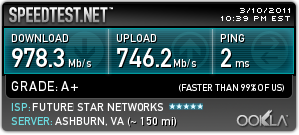Limitations/Issues:
- The Show Desktop function in windows can not be used together with this solution. It will make the taskbar disappear along with all other windows. If done by accident, you must toggle all windows visible again, with Show Desktop, to get the taskbar back. To get access to the taskbar when it's hidden bring up the Start Menu by pressing the windows key or ctrl+escape.
- The taskbar will not "push" away desktop icons like it does normally.
- It can sometimes happen that the taskbar is initially (auto-)hidden. This is simply solved by moving the mouse over the screen edge where the taskbar is to make it visible, or bringing up the Start Menu. It will remain visible after that.
- It's possible that this might stop working after a windows update, if MS updates explorer. In that case the application should display an error message that it failed to apply.
Here's How:
1. Download the DisableTaskbarOnTop app from here.
2. From the downloaded zip archive extract the 32-bit or 64-bit version depending on which windows version you're running. (Also looking through the readme file is recommended, for most up to date information.)
3. Run the application. If everything works it will quietly change the taskbar behavior (and exit immediately). Only in the case that it's not be able to do what it's supposed to, will there be a (error) message displayed.
Note that Always on top will only be disabled for the current session. If you log out, restart windows or explorer restarts for some reason, the DisableTaskbarOnTop application has to be run again. See point 5 below how to make it run automatically.
4. In order to fully make it work as it's supposed to, the taskbar option "Auto-hide the taskbar" has to be enabled. This ensures that maximized windows cover the entire screen and not just the area outisde of the taskbar. Note that the taskbar won't actually auto-hide. A guide to enable taskbar auto-hide can be found here.
--
5. If you've done the above and everything works to your liking, you may want to have it run automatically when you log on. The easiest solution is to move the DisableTaskbarOnTop executable to the Startup folder of your Start Menu.
The simplest way to do this, is to locate the Startup folder by going into All Programs on the Start Menu. Then right click on Startup and pick Explore from the popup menu. This will open an explorer window of the Startup folder, into which the file can be moved.
Removal:
To "remove" this just don't run the DisableTaskbarOnTop application any more. Logging out and in again (or restarting windows) will restore original behavior. As it only affects explorer in the current session, there are no permanent changes or traces from using it.
If you have it in the Startup folder you must delete it from there before logging out and in, to prevent it from running again.








 Reply With Quote
Reply With Quote


Social Networking Bookmarks